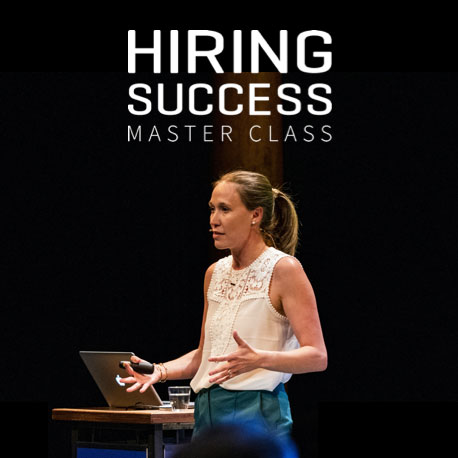While much of the world is in lockdown and corporate HR teams are still grappling with the Covid-19 crisis, one thing has become quite clear: in order for talent acquisition (TA) to remain relevant, it must evolve as a function.
Granted, TA, like most professions, is always evolving. However, recent events dictate that the evolutionary process has to be expedited. To be fair, we—the co-authors of this article—can attest to the fact many of our colleagues and professional acquaintances across the globe have also, to varying degrees, arrived at the same realization. The real challenge now lies in moving beyond the diagnosis and finding a suitable cure.
To that end, we believe that once the dust settles there will be a wonderful opportunity to re-invent and re-purpose the traditional TA function under a more influential CHRO.

First though, we have to deal with the fallout from the crisis. Depending on your industry sector, this will involve varying degrees of down-sizing, right-sizing, digitization, automation, and, in many cases, reductions in operating expense (OPEX) and headcount. Consequently, many companies will be forced to relinquish talent, whose skills are the lifeblood of their success.
Our perspective is that businesses can circumnavigate such fate by ensuring they have the means to rapidly match talent/skills to critical functions and tasks—regardless of external conditions. We define the ability to do so as business resilience.
In order to attain business resilience, companies must necessarily look to their TA functions for guidance. However, in order to provide the best support possible, said functions urgently need to change the services they provide by placing greater emphasis on workforce visibility, internal skills analysis and mobility, career transition, and support services.
Due to recessionary conditions, many companies will significantly scale back traditional external hiring and implement hiring freezes. In other organizations, there will be increased demand for hiring with a need for scale-ups and the development of reservist pools of critical skills—internal and external to the company.
Wherever you are in the economy it is clear that a wholesale review of TA’s purpose and services are required. And for many functions, they will never look the same again.

On the other side of this crisis, we believe the role of the CHRO will become significantly more influential, and that this transition will mirror the way in which “power” shifted to the CFO and risk & compliance functions following the global financial crisis of 2007–08. Why? Because Covid-19 is a global health crisis, impacting the basic needs of humanity. This will necessitate businesses to invest more heavily in a broader, more comprehensive people strategy, as well as the mitigation of workforce risks.
Our current state of affairs has exposed many companies to the shortcomings of their core infrastructure, technology, and people-related policies and programs. So much has changed in the past few weeks in order to allow businesses and their workforces to cope. The question we now need to start asking is, “What do we choose to keep in the future?”
Many companies have already identified weaknesses impacting their organizational resilience, and some are likely to re-prioritize core HR and people management systems for capital expenditure (CAPEX) investment, as legacy systems and procedures have not allowed for an effective management of the crisis. The fact that most businesses do not know what skills they actually have within their organization is simply not good enough. This has thwarted attempts to efficiently re-deploy or mobilize workforces at scale, impacting the operational effectiveness of the business.
The fact that most businesses do not know what skills they actually have within their organization is simply not good enough.
So while redefining its purpose, service design, and operating model, TA should be supporting the CHRO and providing a clear understanding of where the function has been exposed during the crisis, where it has been unable to support the business, and where people and workforce risks are heightened because of under-investment—core infrastructure and technology, in particular.

Going forward, we think the best course of action is to move away from the service constraints of talent acquisition. One of the co-authors—Gareth Flynn of TQSolutions—has developed the acronym TEaM (talent engagement and mobility) to describe the ideal future focus of talent acquisition service models (moving from TA to TEaM). The other co-author, Michael Johnson of SmartRecruiters, is supportive of this transformation and endorses this view.
We believe progressive and mature talent TEaMs will be more relevant and much better placed to support an organization focused on resilience and people risk mitigation. Here’s how:
Talent:
By enabling companies to seamlessly attract, select, and hire the best candidates—on demand and on budget. Whether it’s for a full-time job, a project, a secondment, or a gig. The talent can be internal, external, permanent, contingent, casual, a sub-contractor, an agency staff member, a consultant, and so forth.
Engagement:
Taking ownership for strategic sourcing, talent identification and connection, and pipelining. This would also include hiring, contracting, on-boarding, and inducting, as well as on-going communication, professional development, alumni programs, and networking.
Mobility:
Facilitating any move that takes place internally or externally—new roles, secondments, projects, exits, etc. Ideally, supported by career development coaching programs and other similar initiatives.
A talent TEaM set up to deliver these services can pivot and adjust to fluctuations in the economy and shifting organizational strategies, thus making its relevance evergreen.
Critical enablers such as TEaM member skills and capabilities will need to broaden significantly with more “T” shaped skills being required, allowing people to move across different service lines, depending on business conditions.

However, it will be imperative for talent TEaMs to have a highly agile and flexible operating model, potentially relying on specialist partners and vendors to outsource or augment some of its services, provide scale and capacity during peak periods, or redeploy talent in the event of a downturn.
Finally, in order to ensure business resilience, it will be imperative for talent TEaMs to have best of breed technology at their disposal to execute these services. Similar to our conviction that TA would more aptly be called TEaM, we also think that it’s far more accurate to refer to powerful applicant tracking systems as talent acquisition suites (TAS).
A sophisticated TAS can empower talent TEaMs to carry out all stages of the hiring process, from sourcing to hiring and everything in between. One TAS capability/feature that, until recently, hasn’t been given due consideration and will need to be embraced by talent TEaMs are talent mobility platforms. Among other things, talent mobility platforms facilitate internal mobility and career pathing through internal job advertising, workforce skills inventory/gap analysis, mentoring, redeployment programs, and more.
An asset like this is advantageous in both bullish and bearish market conditions; however, in the latter its value becomes even more apparent. Companies that have clear visibility of workforce skills and career preferences are much better placed to manage the impact of downturns with the inevitable introduction of hiring freezes.
Necessity, they say, is the mother of invention. For our intents and purposes it’s both the mother of invention and of evolution. Out of necessity, we are now locked towards the future of talent acquisition. One in which traditional recruitment and talent management teams merge, at last providing visibility of skills within the organization (at scale) and visibility of external talent pipelines (as required).
Thus, the emergence of talent TEaMs will usher in a new era of organizational resilience—in addition to resilience and continued relevance for the function formerly known as talent acquisition.

 Enroll in the Master Class & earn 6 SHRM credits
Enroll in the Master Class & earn 6 SHRM credits